Any visitor to the Barbican will know its highwalks. The criss-cross of raised footpaths provide a confusing but just-about functional means of traversing the much loved residential and cultural centre. But follow them to the estate’s edges, attempt to use them to exit to the City at large, and whatever strange logic they possess starts to break down.
A bridge you half-remember led to the tube station you want ends abruptly in mid-air, its access point fenced off. A pot-planted path entices you around a corner into an enclosed, paved backwater, where the sounds of an unseen city roar in the air around you.
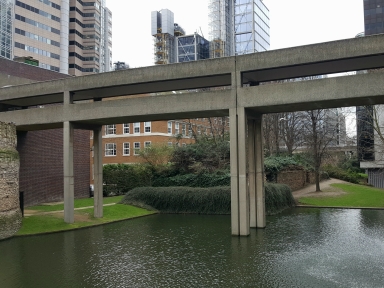
Should you explore these dislocated spaces, or better still find yourself on one of the dwindling number of similar stretches that are adrift about the City, you might see – moving through them with detached, ritualised ease – a smartly-dressed woman in her seventies.
This is Gillian Clarke, and for three decades she has been searching for an old friend of hers, or at least for what she believes to be the means of his disappearance: The highwalk where there is – or was once – a gateway to other worlds.
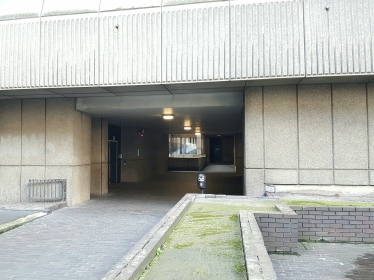
The truncated limbs and architectural non-sequiturs Gillian treads are the decayed afterimages of a once shining vision: a post-war dream to replace the crater-pocked landscape the Luftwaffe made with an airborne City of the future, in which motor cars stream along unbroken highways, while pedestrians glide above happily on a City-wide network of ‘pedways’.
Driven by the London County Council (later the Greater London Council) and embraced by the Corporation of London, the scheme was made law in the 1960s – any new office block was compelled to accommodate the plan.
But – as is well known by those who study the restless borders of the capital’s dimensional territories – London resists a unifying vision. Londoners, along with their shops and their pubs, remained stubbornly ground-level, and the pedestrian paradise never materialised.
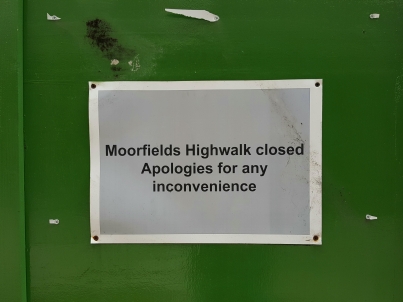
Gillian and her colleague John Blakeley worked in the London County Council’s planning department in the 1960s, when John had been bursting with optimism. He was, says Gillian, as we walk the remnants of the network-that-never-was, “one of the bright young things at the LCC, pushing hard to implement the whole thing from the start”.
But progress was slow, and as the 1970s wore on, Gillian witnessed a change in John. “The barriers – funding, the conservation lobby, public apathy – wore him down”, says Gillian. He withdrew into himself. Gillian remained a good friend but he began to alienate other members of staff.
He became a figure of derision, not least because of a magpie-like habit of cluttering his desk with an array of unusual items.
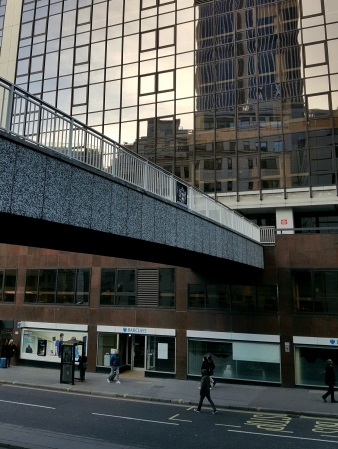
“The ‘Trinkets’, the others called them. He was vague about them, even to me. Said he found them in markets, junk shops. I mean, this was the ’70s. There was a lot of odd stuff you could pick up in the hippy shops off Carnaby Street. But some of these things were beyond odd.”
There were unidentified fragments of bone, obscure dried plants, bizarre sculptures. Pieces that might have been Roman coins, except their strange symbols weren’t Roman. But strangest of all, she says, were the “little gadgets” arranged among the hoard.
“Every now and then one of these things would appear around his desk. It seems unreal now, but they clicked and whirred away in his corner of the office for years”. The mechanisms were made of stone, or strange metal, impossibly intricate, and engaged in seemingly perpetual motion, their purpose mysterious. “They’d be hard to explain even now – we never could find the batteries – but back then they seemed like witchcraft. Only they were around so long they just became background noise”.

One thing in particular Gillian remembers well. “There was a pair of them – two smooth, jet-black stones, shaped like flattened, elongated eggs”. One evening, when most of the office had gone home, John had showed Gillian a trick.
“He placed one in my hand, and lightly touched the one he was holding, tracing his finger across it in – well, in a pattern which I have tried to recall many times since”.
As he did so, Gillian’s stone lit up – briefly, warmly – with a swirl of colours, and spun ever so slowly in her palm.
This was the 1980s, Gillian recalls. Things were changing in the City. Thatcher’s government was working hard to dissolve what was now the Greater London Council. The pedway scheme seemed suddenly like the whimsy of a previous era – some pieces of the network were already disappearing.
And Gillian had begun to worry about John’s health.
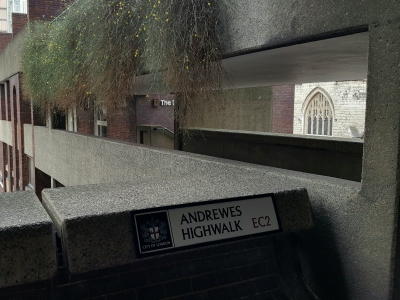
“He seemed unwell to me. Tired, thinner. It wasn’t just middle-age. I looked at him one day and he seemed suddenly much, much older. And something was gone. Some spark, some desire for life in the city.”
Then, at an office Christmas party, things came to a head. John had had a bit too much wine. He lashed out at his colleagues, at their ‘tiny lives’, their ‘lack of ambition’… ‘so much is achievable. You haven’t got a clue’.
Gillian took him into a side room to calm down. That is when he told her that his Trinkets hadn’t come from junk shops.
“Whether he said ‘other worlds’ or ‘other times’, I can’t remember”, Gillian says. “But he told me that in some redundant recess of an unconnected section of highwalk somewhere, there was a doorway”. A doorway nobody knew but him.
He was drunk, he was rambling, she thought.
“I don’t think so now”
He left the party, but at some point that night he must have returned, because in the morning his desk was cleared out. John – along with most of his strange collection – was gone.
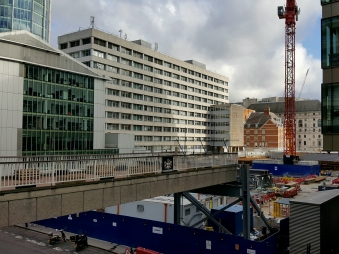
Gillian walks me along dark, weed-taken paths that weave through a brutalist office complex; through the strange, double-backing corridors of a post-modern development somewhere behind Bishopsgate. We have passed fag-breaking office workers, a few sleeping bags – even the occasional hurried Londoner, using the walkways for their intended purpose.
Now, we stand at the windswept, south-eastern edge of what remains of London’s walkways in the sky. Across a grey, choppy river, The Shard makes its presence known.
Gillian tells me there was one item John didn’t take with him that night. He left it in her desk drawer, for her to find.
She reaches into a pocket, and holds out her palm to show me – a single, jet-black stone. ‘This’, she says, her fingers closing again around the flat, oval shape. ‘This is the reason I still look for John’.
She has no idea if John Blakeley’s highwalk even remains. Every time she returns, another piece of the network has gone, lost to Crossrail or the steady flow of skyscrapers.
Her search has become more of an annual habit, a mark of respect. Whatever hope Gillian retains is cold and resting like the stone in her pocket.
- Candidate: Blakeley’s Highwalk
- Type: Transgalactic [unconfirmed]
- Status: [unknown]
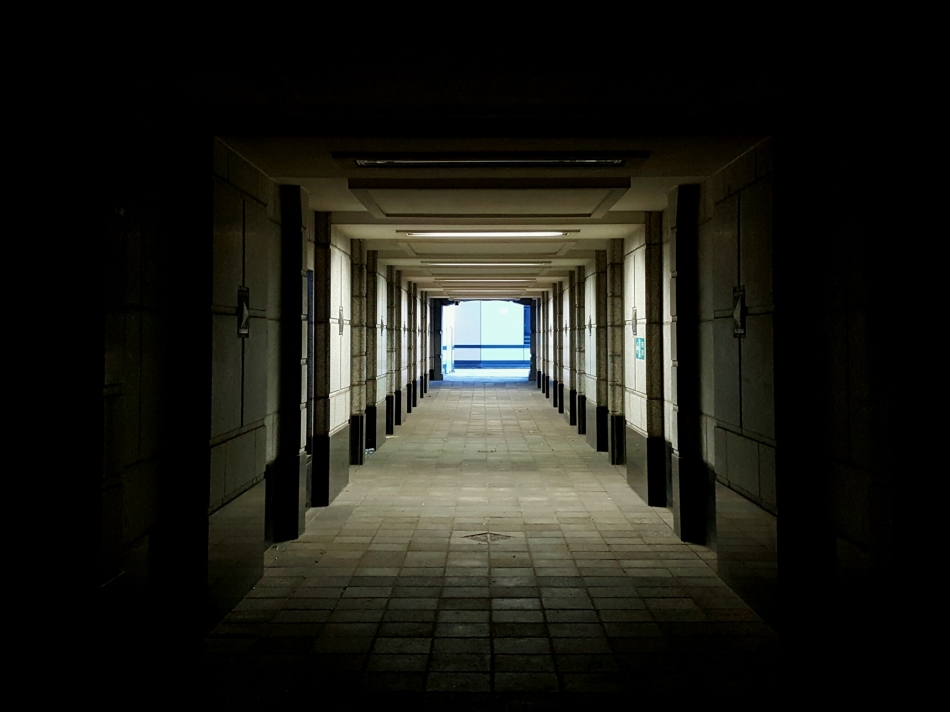
I have been following your writings for a couple of months now and enjoy them muchly.
There is a south London born and based music producer who goes under the name of Burial. His music is dark, other – worldly, like something you see just outside your peripheral vision and question if you really did see something. It has that effect. Very much like your writing.
Thank you
LikeLike
Are all your stories fictional or are they based on true events and characters?
LikeLike
The old Bethlem Hospital moved from Bishopsgate to Moorfields in 1675.
It was through Moorfields I wandered by myself all alone;
I heard a maid in Bedlam a-making a sad moan.
She was wringing of her tender hands, and tearing of her hair,
Crying, “Oh! cruel parents! you have proved to me severe!
“You have taken my own true love and to sea made him go,
Pressed all on a man-of-war which caused my overthrow.
It made me sorely to lament and tarned my poor brain.”
Crying, “Oh! Shall I ever see my own true love again?”
It was early the next morning this young sailor came on shore,
He walked and he talked down alongside by Bedlam door.
And be gave unto the porter a broad piece of gold,
Saying, “Bring that young girl to me, she’s the joy of my soul.”
Then he took her from her straw bed and set her on his knee,
Saying, “I’m that same young man that your parents pressed to sea.
But now my cares are gone and all my sorrows they are fled
Then adieu unto these chains and this cold straw bed.”
— Porter; or Portal-keeper? —
LikeLiked by 1 person
beautifully written and I enjoyed the photos
LikeLiked by 1 person
Thanks!
LikeLike
I hope he’s not now trapped in an eternal Tricorn Centre, concrete does after all call to concrete
LikeLiked by 1 person
Very interesting story
LikeLike
I wish this was true. Perhaps it is true. I often walk around the Barbican, and this story captures the technological mysticism of the place.
This is fantastically executed and well written. I salute the writer.
LikeLiked by 1 person
The smooth, jet-black stones mentioned here are familiar. Might John have found two of the “12 smooth, black stones” that were cast into the Thames every year as ‘rent’ for the Black House?
https://portalsoflondon.com/2017/02/16/the-black-house-searching-for-londons-strange-embassy/
LikeLike
While I have not had the opportunity to examine for myself these walkways, indeed had never heard of them until yesterday when my partner first directed my attention to PoL, Ms. Clarke’s description of the ‘black stones’ is horribly familiar to any heirophant of that other, equally derided mythology.
I can only implore Ms Clark in the strongest possible terms not to handle these stones, as to do so without full knowledge of their operation is highly dangerous. Under no circumstances should she attempt to replicate the finger-passes made over them by her colleague. Even an inkling of their true provenance should suffice to dissuade any but the most foolhardy.
It would be best, indeed, to lock such items away in some hidden place, safely away from the eyes and hands, of the ignorantly curious.
LikeLike